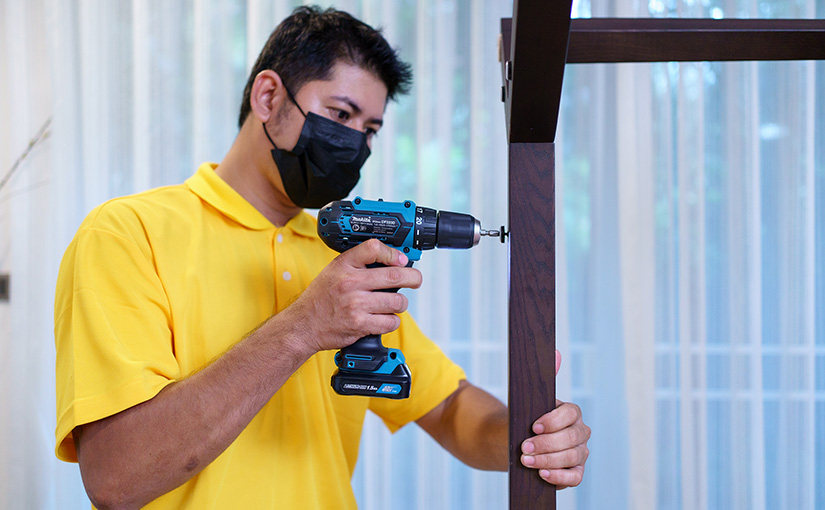What Are the Key Stages of Home Moving?

Relocating a house is one of many exhilarating yet challenging activities. Consisting of a high number of potential critical activities, each of the stages in home moving requires perfection in planning and flawless execution skills to enable an easy transition from one place to another. Whether you are going to move across the town or someplace outside the country, knowing these stages will allow you to keep organized and thus stress-free to a minimum level. Through this paper, we are going to highlight the key major stages of home moving and bring out ways through which one can successfully pass each of these stages.
1. Planning and Preparation
Planning and preparing form the first stage of home moving, and as the name states, this stage is the base of the move. At this stage, a number of important things are supposed to be done:
- Set Move Date: It is about choosing the best time to move that will not conflict with you, depending on your program. Therefore, consider all work obligations pertaining to work, school, hence ensuring that it is not a holiday or school dates.
- Moving Checklist: With this, it will be a very elaborate document and it will be effective in organization. Create a list of what needs to get done pre-relocation, during the relocation, and post-relocation. There should be no exception, even informing the utility providers about the change of address and in packing, to the things like hiring movers.
- Create a Move Budget: Make sure to create a budget that outlines every expense one is likely to incur in the process of hiring movers, truck rentals, packing supplies, and other added services such as storage and cleaning.
- Hire Professional Movers: Then make sure to search and reserve a licensed moving company, like Asian Tigers Group, as far in advance as you can. Get a few quotes from different service providers. Check their online reviews to be certain of the service that will be moving you.
- House Cleaning: Almost an absolute must before packaging begins, is cleaning out the house. Give away, sell or discard what you no longer need. This would reduce the number of things to be packed and moved, as well as save your money and time.
2. Packing
One very time-consuming step in home moving is packing. Proper packing helps protect your items while in transit and makes for easy unpacking. Finally, you actually do this home moving to achieve these effects:
- General Packing Supplies – Make sure you gather your moving supplies, such as corrugated boxes, tapes, bubble wraps, and pack papers. For particularly fragile items, you may need specialty boxes for things like dishes or electronics.
- Packing Room by Room: This is pretty much systematic. Mark each box on contents and to which room it belongs. This will be a lot easier when unpacking and nothing will go missing.
- Safety for Breakables: To the fragile stuff, wrap them all on bubble wrap, packing paper, or even blankets. These consist of glassware, mirrors, and pictures. Fragile boxes should be marked with a label so that movers will know to handle with much care.
- Packing the Essentials Box: Pack other essentials that can be used immediately on arrival at the new house. It could be a new set of clothes, personal documents, or essential kitchenware.
- Dismantling Furniture: It is important to dismantle bulky furniture for the ease of movement. Put together all the screws, bolts, and other small parts in one labeled bag, making it easy to reassemble the furniture when you reach your new house.
3. Moving Day
The day of moving, when items get transferred from the former home to the latter, is arguably the most critical phase of home moving. Here’s how everything is done seamlessly:
- Confirmation of Arrangements. A day before, place a call across to your moving company or the place you rent the truck from to effect a confirmation about the details, including the address and special instructions.
- Final Walkthrough: Just before leaving your old home, do a final walk-through to make sure that you haven’t forgotten anything. Oversee the Move: If using professional movers, be there to oversee the loading and make sure that everything is being well taken care of. If moving on one’s own, then there is plenty of time to pick up heavy items and not be injured.
- Time Management: Time management is key on the day of the move. Waking up early and adhering to an allocated schedule will indeed assist one in the moving process without unwarranted delays. For long distances, calculate the route prior to the journey and drive through it to avoid possible jam-ups in traffic or road closure.
- Safety First: On moving day, move safely first. Keep hallways clear, lift correctly, and keep children and pets out of the action in a safe location.
4. Unpacking and Settling In
Traditionally, once you have finally landed at your new home, this stage of moving would involve the unpacking of items and getting settled in your new space.
- Unpacking Essentials First: Start unpacking that ‘essentials’ box you packed earlier. That way, you will have what you need to make it through the first day or two in your new home.
- Unpacking Room by Room: Just as you packed room by room, you need to unpack in the very same way. You are supposed to set up the most important rooms first like the kitchen, bedroom, and even the bathroom.
- Furniture Arrangement: Place the furniture of your new living space progressively. Considering comfort in every aspect of living, think about the arrangement of each room. Think about the arrangement and flow.
- Utilities and Services Arrangement: Ensure your utilities are on and operational within your new home. If needed, make appointments for the services required that entail setting in place—e.g. cable or alarm systems.
- Getting to Know the Neighborhood: Spend some time getting around your new neighborhood. Find the grocery shops near you, parks, and other amenities. Introduce yourself to your neighbors and start getting connected into your new community.
- Change of Address: Don’t forget to change your address at the post office, banks, credit card companies, and all those important places so that you continue receiving your mail without any hitches.
5. Activities after Moving :
Even after settling down, there remain a few more things to be carried out at this last stage of home relocation:
- Evaluation of the Relocation Experience: If professional movers have been used, take a minute to evaluate their services. This will greatly assist other people in making decisions online. If you have had issues during your move, call the company for some resolution.
- Return Rental Equipment: If a moving truck or any equipment was rented, ensure that they are returned on time so you don’t get overcharged.
- Arrange Important Documents: Keep all the moving papers safe, the contracts, and the receipts. You might need them either during tax time or in cases of problems arising after the moving day.
- Housewarming Party Planning: You can be glad and plan a housewarming party in celebration of your successful move. It feels really good after showing your new home to your new neighbors.
Conclusion
It’s one of the big changes in life, and some key stages included in this are planning the move, packing, reaching the new place, and completing post-move tasks. To understand each of the home moving stages meticulously, it will help you handle it more smoothly and hassle-free. With proper preparation and optimism, you will be enjoying your new home and fresh start.
If you’d like to discover the latest information about the moving and relocation world, please also check other industry news from Asian Tigers Group.
Your trusted moving support is only a few clicks away from your hand. Contact the Asian Tigers office near your origin or destination for your next move. You can also check our Frequently Asked Questions resource, AI-powered by Tiger Move Bot.









